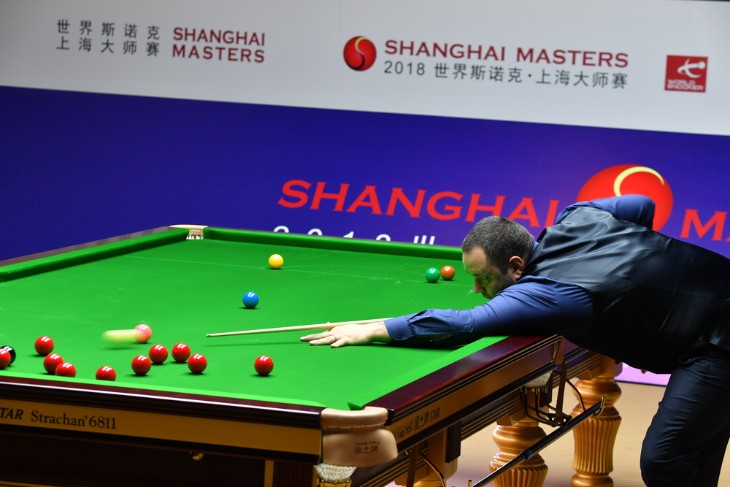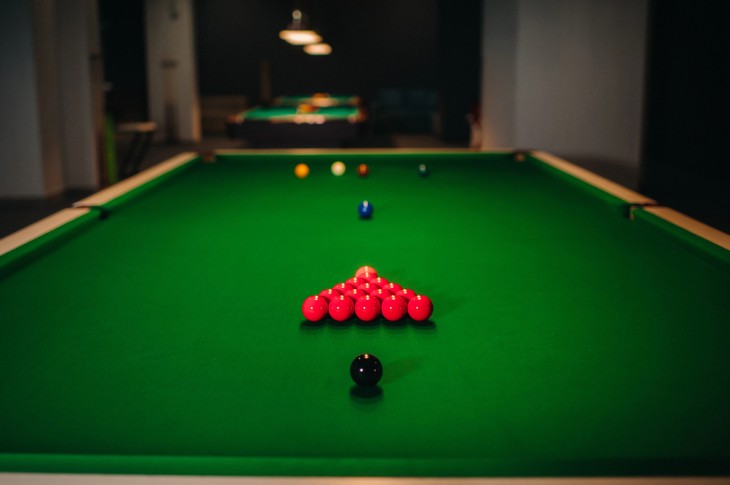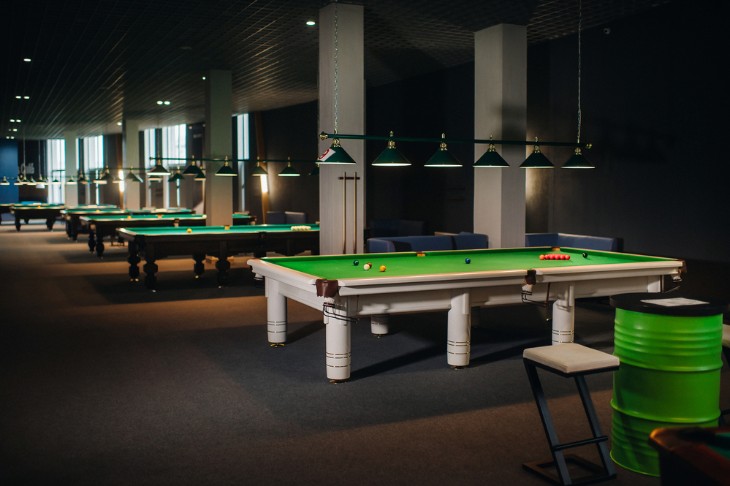- Space Requirements for Different Snooker Table Sizes
- Essential Measurements for Cueing Space
- Factors Affecting Room Size for Snooker Tables
- Furniture and Accessories: Planning Your Snooker Room
- Safety Considerations in Snooker Room Design
- Professional and Recreational Perspectives on Snooker Room Size
- Conclusion
Snooker, a cue sport played on a rectangular table, requires precise dimensions for both the table and the room it occupies. A standard full-size snooker table measures 12 feet in length and 6 feet in width. This size is commonly used in professional tournaments and is recognised by the World Snooker Association. The playing area, excluding the table's rails, measures 11 feet 8.5 inches by 5 feet 10 inches. The significance of these dimensions lies in their influence on gameplay, as they dictate the difficulty of shots and the strategy employed by players.
However, snooker tables come in various sizes, catering to different skill levels and space constraints. Smaller tables, often found in homes or recreational centres, can range from 6 feet to 10 feet in length. These variations affect the playing experience, with smaller tables generally offering a less challenging game. The choice of table size is thus crucial, depending on the player's skill level and the intended use of the table, whether for professional practice or casual play.
Space Requirements for Different Snooker Table Sizes
When planning a room for a snooker table, one must consider additional space around the table for players to cue comfortably. For a full-size 12-foot table, a recommended room size is at least 22 feet by 16 feet. This allows about 5 feet of cueing space around the table, which is adequate for most players to play without any hindrance. The cueing space is essential not just for the freedom of movement but also for accommodating the length of the cue, which typically ranges from 57 to 58 inches.
For smaller tables, the room size can proportionately decrease. For example, a 10-foot table can fit comfortably in a room measuring 20 feet by 15 feet. However, it's important to consider individual playing styles and preferences. Some players may require more space for elaborate shots or may prefer a more spacious setting for a comfortable gaming experience. In addition to the playing area, one should also account for space for seating, storage of cues and equipment, and movement around the room, ensuring a functional and enjoyable snooker environment.

Essential Measurements for Cueing Space
Determining the right cueing space is integral to answering the question, "What size room for a snooker table?" This aspect goes beyond the mere dimensions of the table itself. Cueing space refers to the area around the table that allows players to take shots comfortably, without any obstruction. The recommended cueing space is at least 5 feet on all sides of the table. This space ensures players have enough room to extend their cue and adopt various stances and positions needed for different shots. For a full-size 12-foot table, this translates to a room dimension of at least 22 feet by 16 feet, as previously mentioned.
However, these measurements are just a starting point. Individual preferences and playing styles can significantly influence the required cueing space. For instance, a more experienced player or one with a more extensive range of shots might prefer additional space to maneuver. Furthermore, the type of cues used, which can vary in length, also plays a role in determining the adequate cueing space. Therefore, when planning a snooker room, it’s advisable to consider these variables to ensure a comfortable and unrestricted playing environment.
Factors Affecting Room Size for Snooker Tables
When considering the installation of a snooker table, several factors can influence the size of the room required. Firstly, the size of the table itself is a primary consideration. As previously discussed, a full-size table demands more space compared to smaller variants. Secondly, the layout of the room plays a crucial role. Features such as columns, alcoves, or irregularly shaped rooms can limit the usable space, necessitating a larger room to accommodate the same size table comfortably.
Another factor to consider is the furniture and other room amenities. If the snooker room is intended to double as a social area, additional space for seating, a bar, or other entertainment features must be accounted for. This requirement can significantly increase the total room size needed. Moreover, it's essential to consider future upgrades or additions to the room, such as electronic scoreboards, display cabinets for trophies or memorabilia, which might require additional space. Thus, a comprehensive assessment of current and potential future needs is vital in determining the appropriate room size for a snooker table.
Furniture and Accessories: Planning Your Snooker Room
When addressing the question, "What size room for a snooker table?" one must also consider the space needed for furniture and accessories that complete the snooker experience. The selection and arrangement of furniture play a pivotal role in the functionality and aesthetics of the room. Seating, for instance, is essential for players and spectators alike. Comfortable chairs or sofas should be positioned strategically around the room, allowing clear sightlines to the table while not encroaching on the cueing space. Additionally, the room might include a scorekeeping area, a cue rack, and storage for other snooker accessories, which also require adequate space.
Lighting fixtures, another critical component, should be placed to provide uniform illumination over the table without causing glare or shadows that could hinder gameplay. The choice of lighting can greatly impact the ambiance of the room. Besides the central overhead light typically positioned above the table, additional ambient lighting can create a welcoming environment. The arrangement of these elements should be harmonious, ensuring that the room remains spacious and uncluttered, thus maintaining the primary focus on the snooker table and the game.
The lighting and ambiance of a snooker room contribute significantly to the playing experience. Ideal lighting is crucial for visibility and concentration, enhancing both the aesthetics of the room and the functionality of the playing area. The classic choice for snooker table lighting is a series of pendant lights hung directly above the table, providing bright, focused illumination. These lights should be positioned to ensure that the entire playing surface is evenly lit, reducing glare and shadows that could affect players’ vision and accuracy.
Ambiance, on the other hand, extends beyond lighting. It encompasses the overall aesthetic and mood of the room. Wall colours, flooring material, and decorative elements should be chosen to create a cohesive and inviting space. For instance, darker wall colours can reduce glare and focus attention on the table, while wood panelling or framed artwork can add a touch of elegance. The aim is to strike a balance between style and functionality, creating a snooker room that is not only practical for playing but also a comfortable and attractive space for relaxation and socialising.

Safety Considerations in Snooker Room Design
Safety is a paramount concern in the design of a snooker room. This includes ensuring there is sufficient space around the snooker table not just for play, but also to prevent accidents. A cramped room increases the risk of players accidentally hitting walls or furniture with cues or stumbling over objects. Therefore, in addition to the playing area, extra space for safe movement is essential. This is particularly relevant in answering the question, "What size room for a snooker table?" as it impacts the minimum dimensions needed beyond just playing considerations.
Other safety considerations include the placement of lighting fixtures to avoid head injuries, secure storage for cues and balls to prevent tripping hazards, and ensuring that the flooring is non-slip, especially if the room doubles as a social area where drinks might be served. Electrical safety is also important, particularly in the installation of overhead lighting and any entertainment systems. Ensuring that all installations comply with safety standards and are carried out by qualified professionals is key to creating a safe and enjoyable snooker room.
Professional and Recreational Perspectives on Snooker Room Size
The debate on what size room for a snooker table often varies between professional and recreational perspectives. Professional players and tournaments typically adhere to strict standards regarding table size and room dimensions. For professional play, the room must not only accommodate a full-size table (12 feet by 6 feet) but also provide ample cueing space, lighting, and a conducive environment for high-level competition. This usually translates to a larger room size, often exceeding the minimum recommended dimensions of 22 feet by 16 feet. In professional settings, the emphasis is on creating an environment that meets the standards for competitive play, including adequate space for referees, scorekeepers, and in some cases, an audience.
In contrast, recreational players might have more flexibility in terms of room size. For home environments or leisure centres, the focus is often on fitting the table into an existing space, leading to the selection of smaller table sizes. This can range from 6-foot to 10-foot tables, requiring proportionately smaller rooms. Recreational play places more emphasis on the enjoyment and social aspect of the game, often leading to compromises in room size and playing conditions. However, even in recreational settings, it’s important to maintain enough space for comfortable play to ensure a positive and engaging snooker experience.
Conclusion
In conclusion, determining what size room for a snooker table involves a careful consideration of various factors beyond just the dimensions of the table itself. From ensuring adequate cueing space and considering the room's layout to the selection of appropriate lighting and flooring, each element plays a critical role in enhancing the snooker playing experience. Whether the room is intended for professional use or recreational play, balancing functionality with safety, comfort, and aesthetics is key.
Ultimately, the goal is to create a space that not only accommodates the snooker table but also maximises the enjoyment of the game for players and spectators alike. By addressing each of these considerations, one can design a snooker room that is both practical and inviting, providing a perfect setting for the game of snooker to be enjoyed in all its facets.
For more information:




.webp)


 (1).webp)




















